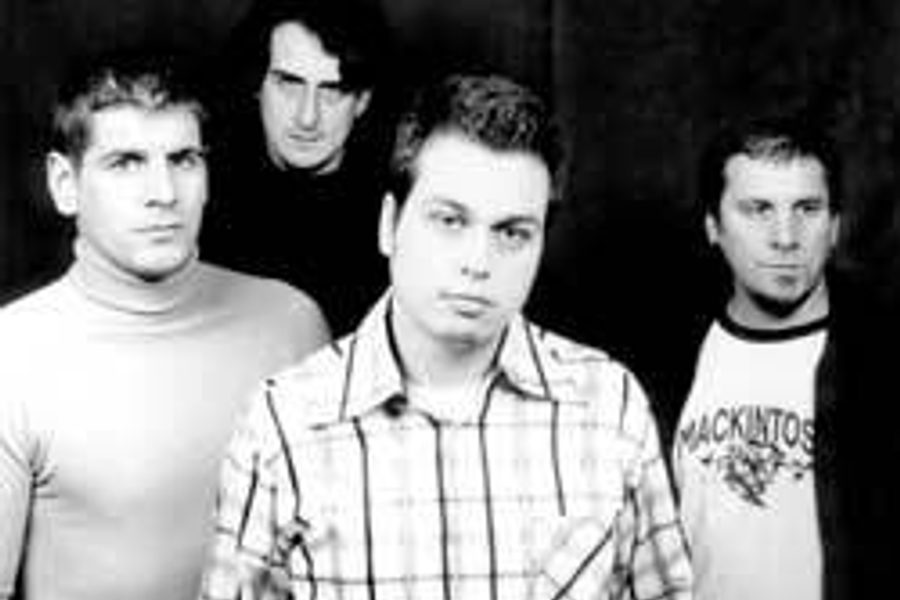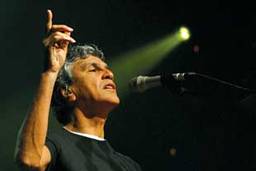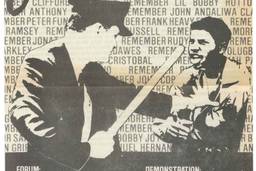
Spanish rock group Manta Ray hails from the city of Gijón, but the creatively ambitious quartet has little in common with such overtly Latin music acts as Plastilina Mosh, Shakira and Los Fabulosos Cadillacs. While the group’s hometown on Spain’s northern coast in the province of Asturias is a long way culturally from Berlin or Chicago, this crew of musical adventurers shares more sonically with ’70s experimental progressive Krautrock groups Can and Amon Duul II and ’90s American post-rockers Tortoise and Trans Am.
Manta Ray formed in 1993 and released its debut the following year. From the outset it was clear the group was more concerned with creating atmosphere and expanding the boundaries of the form than adhering to the standard verse-chorus-verse structure. Although the members of Manta Ray — Nacho Álvarez, José L. García, Frank Rudow and Xabel Vegas — collaborated with Spanish rock legend Javier Corcobado in the mid-’90s, they always have been more comfortable operating far outside the mainstream of modern music. Of course, Manta Ray never set out to create songs to satiate fans of mainstream pop acts Marc Anthony or Thalía. This is avant-garde rock straight from the Spanish underground, and that’s the entire point of this ongoing musical experiment.
On Estratexa, the quartet’s fourth full-length release, the musicians effectively employ droning guitars and analog electronics for ambience and texture; drums that move from tight-lock repetitive grooves to spastic, free form jazz runs; and extended instrumental passages to create some very compelling music. Manta Ray is unafraid of sweeping rock gestures and classical allusions, or to let the tracks swell to a crescendo through mesmerizing repetition, but the musicians also temper this tendency with blasts of angular post-punk guitar energy and garage rock fury.
Like many Krautrock bands, Manta Ray effectively fluctuates between singing in English and in their native tongue, Spanish. That said, half of the 12 songs on Estratexa are instrumentals, and with songs like “Take a Look” and “Qué Niño Soy,” the sound of the voice in relation to the instrumentation is as important as the actual meaning of the lyrics. In “Monotonía” the vocals are pushed down into the mix so far they are unintelligible, blending into the tribal drumbeat, swirling guitar and subtle synthesizer. Although “Rosa Parks” is an instrumental, the song’s theme is anti-racial bigotry and is dedicated in the liner notes to the African-American activist from Alabama and “to all the people of today that still suffer discrimination because of the color of their skin.”
“Añada,” the Asturían name for a children’s lullaby, begins as standard issue post-punk but shifts midway through to an evocative instrumental passage that employs singing saw and samples to create a sound not unlike the musical backdrop to a spaghetti western. The sample of the sound of milk being churned into butter takes on any eerie sound that is more like a pack of marching storm troopers than a regular act of rural domesticity.
While Manta Ray’s music is cinematic — experimental visual shorts have been produced for several tracks — each song is not necessarily background music for a specific film. Instead, the material, all collectively written by Álvarez, García, Rudow and Vegas, works as an aural soundtrack that adapts to various environments and moods. The resemblance to movie music is not coincidental but the result of an avid interest of the musicians, who draw inspiration from a variety of composers. In 1999, Manta Ray performed “Score,” a concert comprised of original songs and film compositions by Ennio Morricone, Henry Mancini and Nino Rota, at the International Film Festival of Gijón.
Despite artistic pretensions, Estratexa proves that Manta Ray is still a damn good rock band at its core. These four musicians know that art is hollow without emotion, and in the end the album works not because of cinematic allusions but because of the visceral charge embedded in each track.
After 11 years Manta Ray is still relatively unknown by American rock fans, but the domestic release of Estratexa, their first, on Portland, Oregon-based independent label FILMguerrero, and the group’s first U.S. tour next month should change that. The quartet kicks off the tour in Seattle on April 16 and will pack in more than 20 shows three weeks before ending in Chicago on May 5. Fans of Krautrock or modern acts such as God Speed You Black Emperor, Tortoise and Do Make Say Think should start trying to find tickets now because, according to European supporters of Manta Ray (www.mantaraysite.com), you don’t want to miss this exceptional Spanish export in action.








